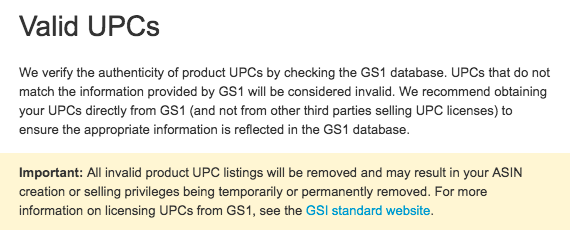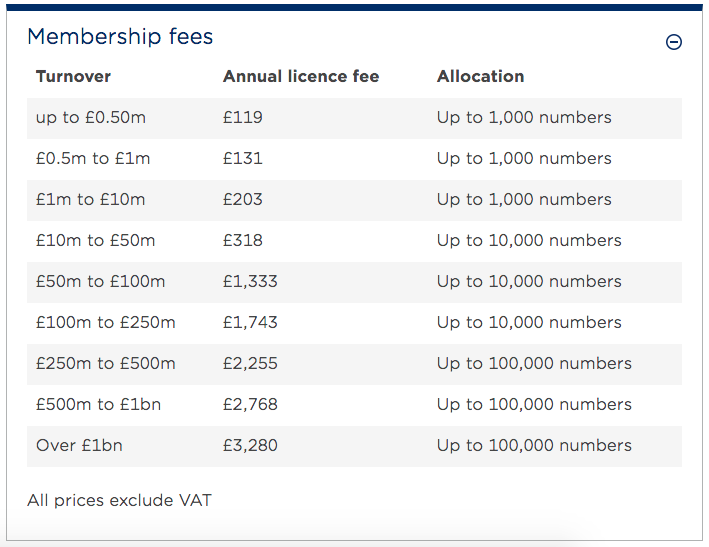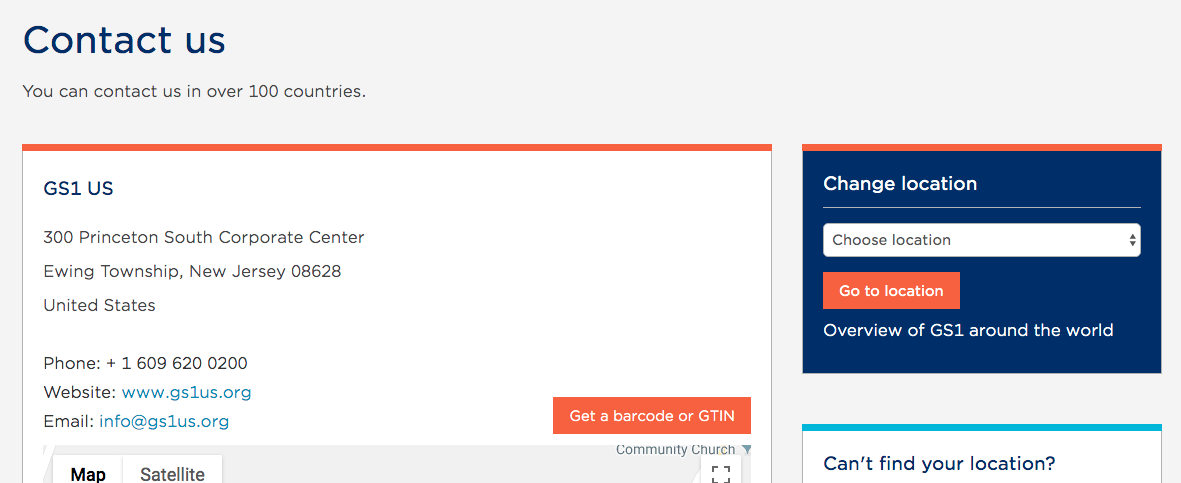Barcode 101’s
What is a Barcode?
A bar code is simply a machine-readable code featuring a series of numbers. Barcodes allow items to be quickly scanned using tools like barcode scanners. The numbers that are normally written below the barcode are the human-readable representation of those numbers. Both the numbers and the barcode mean exactly the same thing.

Bar codes are those white and black bars… and the numbers they mean!
You can generate a barcode for free from a million websites. Go ahead and try it. Type in your phone number into site 1 and site 2 – both generate the same, scannable barcode which is a representation of your phone number. So really, it’s not the barcode that is difficult and costly to acquire, it’s the UPC or Universal Product Code.
Why Does My Product Need a Barcode?
If you’ve ever shopped at any physical store you’ll have noticed every product has a barcode (if you haven’t, welcome to Earth, please enjoy your visit).
Amazon’s no different.
Just like physical stores, they use barcodes to identify and track inventory throughout the fulfillment process, so…
Every Product You Sell Needs Its Own Unique Barcode
Let me clarify exactly what this means because I see the following question a lot from new sellers on forums and seller groups:
“I’m having 500 super widgets manufactured. Do all 500 of them need their own unique barcode? Or do all 500 of them use the same barcode?”
The answer’s the latter. Each product needs a bar code.
As long as all 500 super widgets are exactly the same product, they all use the same barcode on their packaging.
So you only need one barcode for that product.
I stress “exactly the same,” because every product variant – whether that’s size or color or whatever – is treated as a completely different product…
- 500 orange super widgets = one unique barcode applied to all 500
- 500 blue super widgets = one unique barcode applied to all 500
- 250 small orange super widgets and 250 large orange super widgets = one unique barcode for small and large versions (so two in total)
Do Product Bundles Need Barcodes?
Yes, bundles need their own unique barcode too.
Even if it’s two products that already have their own barcodes?
Yes.
Even if it’s a 2-pack of the same product, and that product already has a barcode?
Yes.
Bundles are their own unique product; they have their own price, their own shipping weight, their own packaging dimensions…
So every different type of bundle needs its own barcode.
How Do I Get a UPC?
Depending on who you ask, you either have one choice or two choices when it comes to buying a UPC code:
- Brand new GS1 UPC codes from GS1 (aka GS1.org)
- Used GS1 UPC codes from third-party resellers (Nationwide, eBay , Speedy, etc)
“Depending on who you ask,” because there’s a lot of confusion out there about which GS1 UPCs are Amazon TOS compliant and which aren’t…
And Amazon really doesn’t help clear up that confusion (What?! Amazon TOS vague and confusing… NEVER!!!).
Here’s what Amazon says in the Seller Central help section:
In order to clarify what makes this so unclear, let me explain…
What is the Difference Between GS1 Barcodes and “Resold” Barcodes?
The only place you can get a brand new UPC code is from GS1 (aka GS1.org, GS1.ca, etc.).
The first time you “buy” a UPC code from GS1 they assign you a unique company prefix.
This prefix designates your company as the owner of every UPC that starts with that prefix.
So say my company gets assigned prefix 012345 and I use it to create one UPC for my blue super widget and another UPC code for my orange super widget.
Both 12 digit numbers would begin 012345.
I stressed “buy,” because you don’t buy the codes.
What you actually pay for from GS1 is a license for the prefix, and the right to create multiple barcodes with that prefix.
And GS1 is the ONLY organization that can license and assign these company prefixes.
When you buy a UPC from resellers, like SpeedyBarCodes.com, BuyBarcodes.com, etc. you are using their company prefix. Most resellers promise that you are the only one with access to that UPC code and they sell them as “GS1 originated UPC codes.”
Because of this, if you type any used UPC bought from a third-party seller into gepir.gs1.org (GS1’s Global Electronic Party Information Registry), even if the license has expired it will show you the company that originally licensed the prefix.
For example, here’s what came back when I typed in a used UPC I bought from a well-known third-party seller:
None of the information thrown back by GS1 for this UPC matches any information on my seller account, but when I then created a dummy listing with it, Amazon accepted it.
Can I Buy GS1 UPC Codes Cheaper from Other Countries?
GS1 is the global standard for UPC codes and have offices all over the world.
Thanks to the internet you can buy from any of those offices, pay local prices and because they’re the global standard, still use those UPCs on Amazon US.
GS1 US is usually the cheapest option if you only need a small amount of UPCs…
If you’re a bigger seller and anticipate needing over 100 UPCs, GS1 UK charges a yearly fee based on your income that would probably give you 1000 UPCs for the same cost as 100 in the US.
Costs will obviously vary with exchange rates, so to find the best price at any given time you’ll want to go here to check different locations by using the “Choose Location” drop-down menu to the right.
Having Your Manufacturer Label Your Items
Having your supplier (Chinese or otherwise) label your items is generally a good idea as they will normally do it for free.
If supplying labels to your supplier, normally they will want you to provide packaging with the barcodes incorporated into it OR a 30-Up PDF of barcodes if they are applying stickers.
If you are having your supplier label your items be very vigilant to ensure they apply labels correctly. Both ensure they apply the correct barcodes (use an inspection company like QIMA), and that their barcodes are machine-readable by a barcode scanner, (have your supplier attempt to scan your items using a free cellphone barcode reader app).






